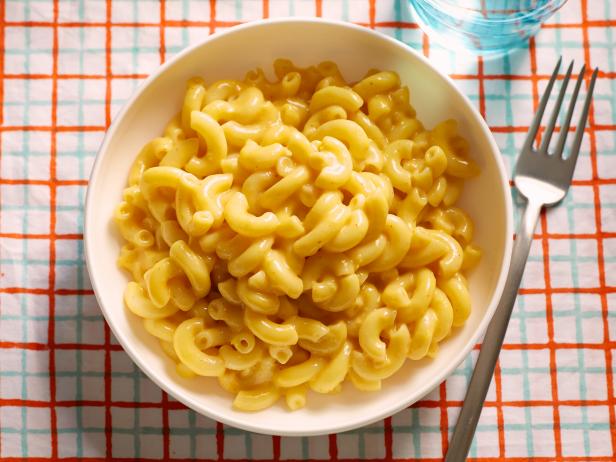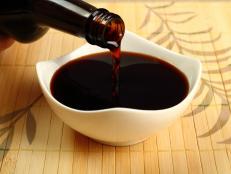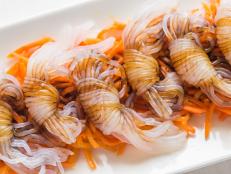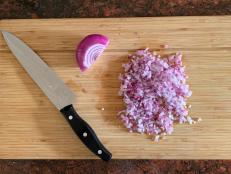What Is Miso?
This versatile flavor powerhouse goes way beyond soup.

TatayaKudo/Getty Images
By Layla Khoury-Hanold for Food Network Kitchen
Layla Khoury-Hanold is a contributor at Food Network.
To dig deeper into this staple of Japanese cuisine, we consulted Pascale Yamashita, a recipe developer, food stylist, food photographer and avid food lover based in Japan.
What Is Miso?
Miso is a fermented soybean paste. It’s made by fermenting soybeans with koji, an ingredient made from either fermented rice, barley (or other grains) or soybeans. In Japan, miso has been a staple ingredient for more than 1,300 years. Miso was once considered a luxury ingredient enjoyed only by the nobles, but today, it is widely enjoyed and used in soups, stews, marinades, dressings and more.
What Is In Miso?
Miso is made with soybeans, water, salt and koji. Top-notch miso starts with the quality of the koji (fermented rice, grains or soybeans), and in Japan, most miso makers make their own koji. This process typically begins 2 days before the miso making starts, like how one develops a sourdough starter before baking bread.
How Is Miso Made?
Soy is thoroughly soaked in water (for about 15 hours), steamed and mashed well, then cooled (to about 86 degrees F). The mash is thoroughly mixed with koji, salt and warm soy water (leftover from the steaming process) to form a dough-like paste. The paste is then formed into a ball about the size of a mango. Yamashita notes that the mixing is done when the ball wiggles like a huge burger patty and cracks like clay. The mix is then carefully added to an air-tight fermenting container and sealed. After the container is filled, it’s sprayed with liquor to prevent mold from growing. The mixture ferments away from direct light for 6 months to 1 year if it's made in the winter, 3 months if it’s made in the summer.

TatayaKudo/Getty Images
Types of Miso and When to Use Each
There are many different types of miso, which vary in flavor, aroma and color depending on where they are made, the combination and proportion of ingredients, and length of fermentation. Yamashita says that, in Japan, miso is categorized by its base ingredient, taste and color. Both red and white miso have three different types based on levels of saltiness. Since miso is made in various regions across Japan, each with different soy, weather conditions, consumption habits and miso-making methods, Japanese miso is also differentiated by area, including Shinshu-miso, Kaga-miso, Sendai-miso and Saikyo-miso.
Most of the miso in both the U.S. and Japan is rice-based; other variations are made with a wheat-based koji (such as barley), soy-based koji, or a combination of rice, wheat or soy. For the purposes of what is available in the U.S., miso can be divided into two main types: light and dark. Note that the color of miso depends on the type of soy used, whether the soy is steamed/braised, how much koji is used and whether it has been stirred during the fermentation process, among other factors. A good rule of thumb: the darker the miso, the bolder the flavor.
Light Miso
light miso is typically labelled as white or yellow miso.
White miso, called shiro miso, is typically fermented with a large proportion of rice koji (fermented rice) and skinless soybeans that have been boiled/braised. White miso is fermented for a shorter amount of time than red miso. It is the mildest of the bunch and has a mellow sweetness, making it a good entry level miso. White miso is ideal for miso soup, hot pot, marinating fish and meat, grilled foods and dressings. Try making this Creamy Miso Dip to accompany cut-up veggies or to drizzle over roasted salmon or sweet potatoes. Or use white miso to make a glaze destined for delicate proteins, as with this Miso Cod with Edamame Rice dish, or to bolster a sweet-leaning glaze, as with these vibrant Orange-Miso Glazed Beets. White miso is also used to add layers of umami to vegan recipes, such as Vegan Peppercorn Chevre or Meatless Carbonara.
Yellow miso, also known as shinshu miso, is made by fermenting soybeans with a koji made from barley and sometimes a small amount of rice, too. In this case, skinless soybeans are steamed, rather than boiled/braised, to preserve umami. Yellow miso is fermented for longer than white miso, ranges in color from creamy yellow to light brown and has a soft, earthy flavor. Try using yellow miso anywhere you’d like to add a rich earthiness, such as glazes, marinades, soups and dips, like this Edamame and Miso Dip. Try dispatching yellow miso to give savory Miso Granola extra oomph.
Dark Miso
dark miso ranges in color from red to dark brown and is usually labelled as red or brown miso.
Red miso, or aka miso, is made by fermenting steamed soybeans (with skin) and koji made from a high concentration of barley (or other grains) for a longer period of time than white miso. Because it’s typically fermented the longest, red miso has a nutty, hearty profile with deep umami flavor. Red miso also tends to be the saltiest. Because of its assertive flavor, red miso is best suited to heartier dishes such as braises and stews, rich soups, marinades and glazes. Yamashita shares that, in Japan, red miso is mixed with soy sauce and sugar to make miso dengaku, a paste that’s brushed over konnyaku (a type of yam cake), tofu or daikon for grilling. This paste is also often used as a secret ingredient in Japanese curry, beef stew or dark-hued sauces in need of an extra boost of umami. Red miso can also be used in miso soup: try subbing in red miso in this Instant Pot Miso Soup recipe to punch up the flavor intensity.
How to Store Miso
As with other fermented foods, miso continues to age in its packaging. It’s best to store miso in the refrigerator: wrap miso in plastic wrap, then store in an airtight container. Yamashita notes that miso doesn’t completely freeze, so you can also store it in the freezer to extend its shelf life. Miso stored in the freezer will become harder in consistency, but it’s still malleable enough to scoop out what you need for cooking. When in doubt, check the container’s sell-by date.
Miso Paste Substitute
To approximate the taste and texture of miso paste, Yamashita suggests mixing 1 tablespoon of soy sauce with about 3 tablespoons of mashed tofu. You’ll still end up with a salty paste, but the umami and depth of flavor won’t be quite the same as miso since it’s a fermented product.
How to Use Miso

Armando Rafael
This version of a classic Japanese soup calls for both brown and white miso to impart a balanced blend of mellow sweetness and savory earthiness.

This easy dressing pulls together pantry staples such as sugar, soy sauce and rice wine vinegar along with white miso for a hit of umami. It’s versatile, too—try it on green salads, noodles or as a veggie dip.

Matt Armendariz, Copyright 2015
Yellow miso’s mellow funkiness is ideal for bringing deep flavor to the miso broth that anchors this rice bowl, while complementing the salty-sweet notes in the salmon’s soy-sugar glaze.

In this vegan mac and cheese recipe, umami-packed white miso teams up with nutritional yeast to replicate cheese’s savory, nutty qualities.

Matt
These fudgy, cakey brownies are proof that miso is versatile in sweet recipes, too. A generous amount of mild white miso adds contrast and boosts the brownie’s chocolate flavors. A drizzle of miso glaze takes the salty-sweet pairing next level.
Related Links:






























































